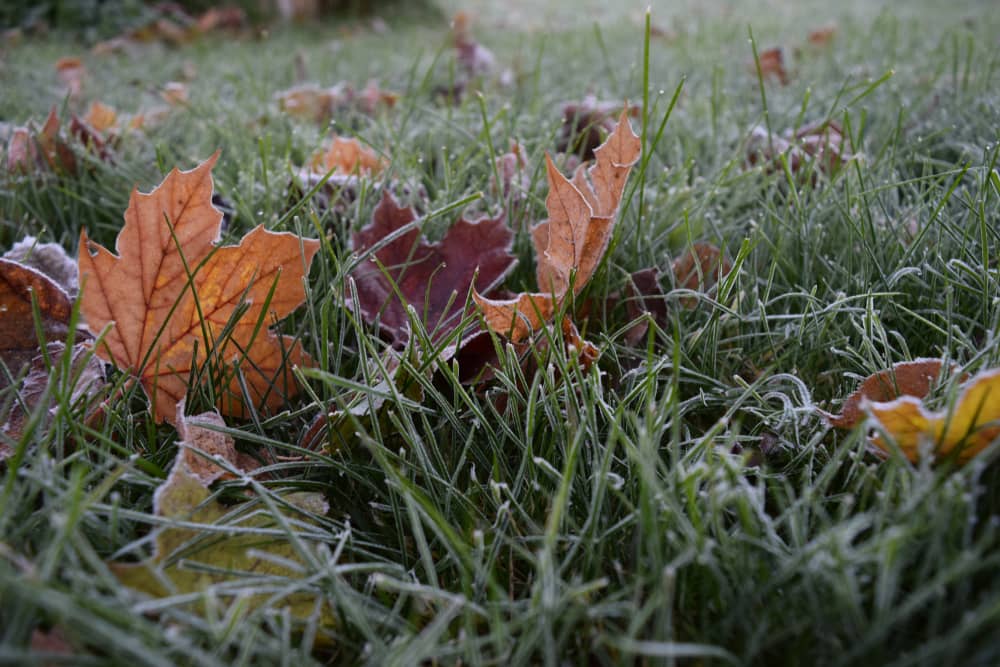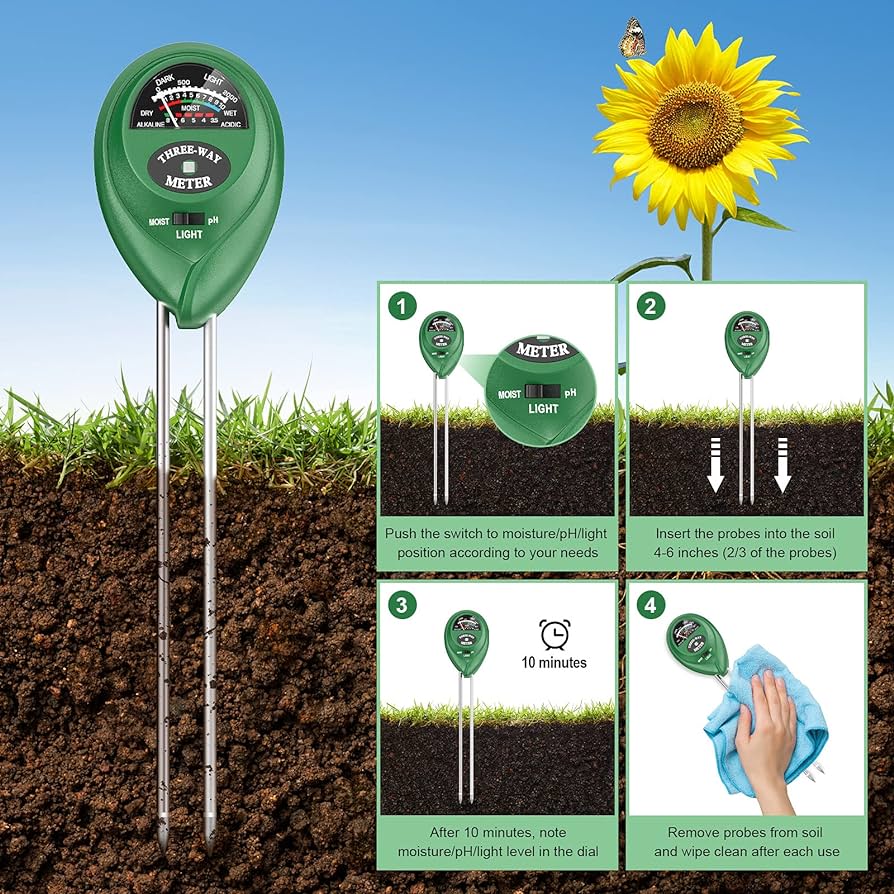While your lawn may appear dormant, it remains very much alive and has specific needs, such as adequate moisture. Winter lawn care is equally vital as other seasonal maintenance routines, as the care you provide during this season will significantly impact your lawn’s reawakening in spring.
Problem #1: Wet Soil
⚠️ Problem: In winter, lawns often struggle with soggy soil due to increased precipitation and frozen ground’s poor moisture absorption. This excess water can cause compaction, reduce root oxygen, and invite fungal diseases. Managing and mitigating winter’s wet soil is vital for a healthy and robust lawn in spring.
✅Solutions: Aerating the lawn and perforating the soil for improved water infiltration and root oxygenation are highly recommended practices. Installing French drains also helps redirect excess water, preventing waterlogging.
🛡Prevention: First, ensure your lawn has proper grading and drainage to direct water away from low-lying areas. Regularly aerate your lawn to improve soil structure and water infiltration. Raking and removing fallen leaves promptly can also help prevent water buildup.
Problem #2: Fallen Leaves and Debris
⚠️Problem: Fallen leaves, though innocuous at first, can harm your winter lawn. They create a moisture-trapping barrier, promoting fungal diseases and blocking sunlight and air circulation, hindering photosynthesis and grass growth.
✅Solutions: Regular raking is a simple yet effective method to prevent leaf buildup, ensuring sunlight and air can reach the grass beneath. Alternatively, mulching the leaves with a lawnmower can provide an eco-friendly solution. The mulched leaves break down over time, adding valuable nutrients back into the soil while minimizing the risk of suffocating the grass.
🛡️Prevention: One effective approach is to regularly prune and trim the trees in your yard to reduce the number of leaves that fall. Additionally, consider installing leaf-catching screens or barriers around trees and gutters to intercept leaves before they reach the lawn.
Problem#3: Winter Desiccation
⚠️ Problem: Winter desiccation, often known as “winter burn,” is the dehydration of lawns and plants during winter due to freezing temperatures, harsh winds, and low humidity. It causes browning, brittleness, and potential damage, weakening lawn health and making it susceptible to pests and diseases, requiring spring recovery efforts.
✅Solutions:
- Water during thaw periods and mild winter days to restore moisture.
- Trim overhanging branches and remove debris blocking sunlight and airflow.
- Overseed damaged areas, fertilize, aerate and dethatch for healthy regrowth.
- Watch for disease or pests and address them promptly.
🛡️Prevention: Deeply water your lawn before freezing to ensure sufficient moisture.Keep the lawn clear by raking away leaves and debris.





